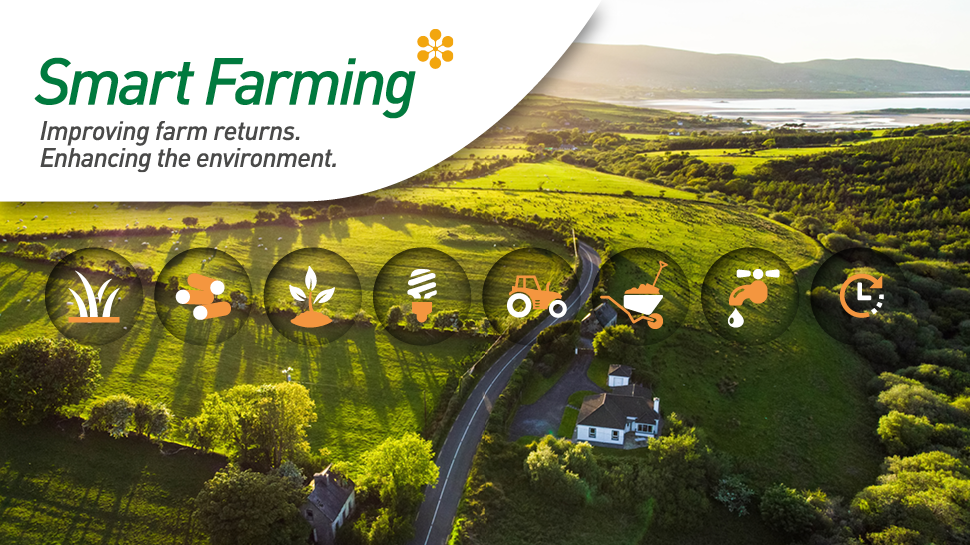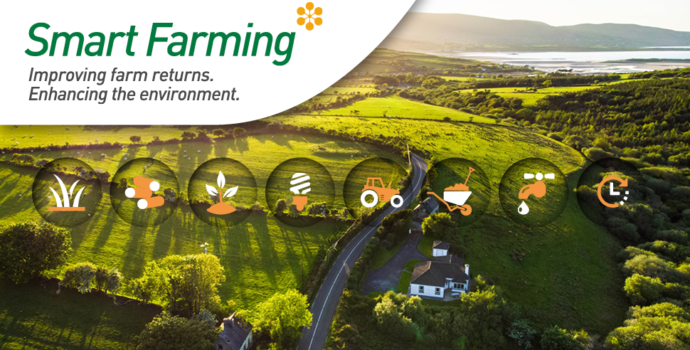Smart Farming: Protected Urea

Protected urea is treated with a urease inhibitor that produces lower nitrous oxide emissions compared to CAN and lower ammonia losses compared to standard urea. Trials have also shown that grassland yields are higher with protected urea over the growing season.
In 2022, the use of protected urea increased by 59%. The Climate Action Plan 2023 set a target to increase the adoption of protected urea to 90 to 100% update on grassland by 2030.
- Protected urea is cheaper than CAN on a cost per kg of nitrogen basis (see Table 1).
- While straight urea is less expensive, when the extra losses associated with standard urea are accounted for, protected urea is cheaper (see Table 2).
Table 1. Relative cost of an application of N using different fertiliser types (Teagasc, 2023).
Table 2. Percentage N lost from three N fertiliser products (Teagasc, 2022).
Impact on Grass Growth
- Trials carried out by Teagasc show that grass grown using CAN, protected urea and standard urea are similar across each fertiliser types.
- In more recent Teagasc trials protected urea grew 13% more grass on average compared to standard urea (see Figure 1).
Figure 1. Average grassland in long-term Teagasc trials across all fertilisers (Teagasc, 2022).
Tips for using Protected Urea
- Protected urea is less dense and lighter therefore will not travel as far and is more affected by windy conditions.
- It is important that the fertiliser spreader is set up in line with manufacturer’s recommendations for the product being used.
- Choose a product that has larger and stronger particles as it will spread better.
- Protected urea can be spread across the growing season at times when you would otherwise spread CAN or standard urea. This means the fertiliser spreader only needs to be set up for one product each year.
Smart Farming is a voluntary resource efficiency programme, run by the Irish Farmers’ Association in partnership with the Environmental Protection Agency.
For more information on the Smart Farming programme visit www.smartfarming.ie .




